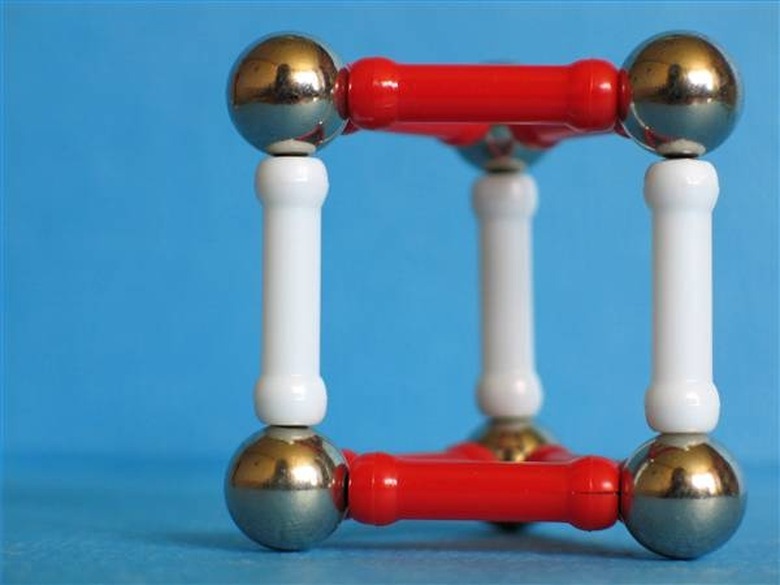What Happens When Two North Pole Magnets Come Together?
The Anatomy of a Magnet
The Anatomy of a Magnet
Magnets are objects that attract items made of certain types of metals. All magnets have two poles that emit opposing forces. The ends of a magnet are called the north-seeking pole and the south-seeking pole. They got these names because, when suspended on a string or immersed in water, the north-seeking pole will point toward the Earth's North Pole, while the south-seeking pole will point toward the Earth's South Pole. One unusual fact about magnets is that if, for instance, a bar magnet is cut in half, each piece will still retain its north and south pole charges.
The Attraction of Charges
The Attraction of Charges
Opposite poles of a magnet attract each other, whereas like poles repel each other. When lined up with a south-seeking pole, a north-seeking pole would draw closer to that end of the magnet. However, when lined up with another north-seeking pole, the two magnets would push away from each other because their forces are not compatible.
Why Do Like Poles Repel?
Why Do Like Poles Repel?
The north-seeking and south-seeking poles on a magnet create a circular magnetic field that runs between them. When an opposite pole is introduced to that magnetic field, it is accepted because it doesn't interrupt the field. However, when a like pole is introduced, it is rejected because it would interrupt the magnetic field. A north-seeking pole cannot create a magnetic field with another north-seeking pole, so it pushes like poles away while drawing differing poles in.
Cite This Article
MLA
Leigh, Katie. "What Happens When Two North Pole Magnets Come Together?" sciencing.com, https://www.sciencing.com/north-pole-magnets-come-together-4913011/. 24 April 2017.
APA
Leigh, Katie. (2017, April 24). What Happens When Two North Pole Magnets Come Together?. sciencing.com. Retrieved from https://www.sciencing.com/north-pole-magnets-come-together-4913011/
Chicago
Leigh, Katie. What Happens When Two North Pole Magnets Come Together? last modified March 24, 2022. https://www.sciencing.com/north-pole-magnets-come-together-4913011/
